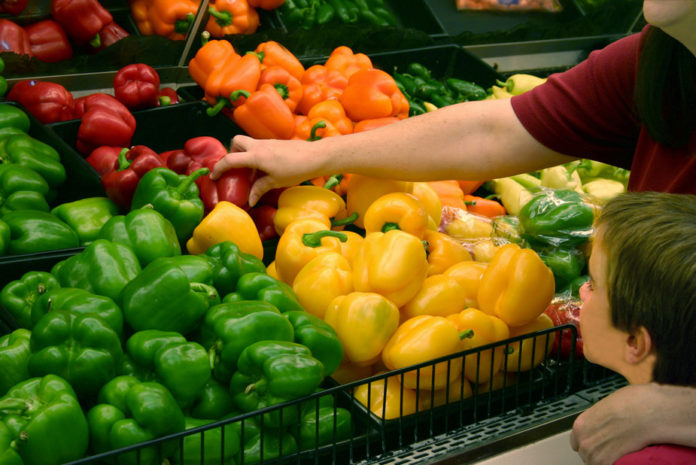
By Hannah Fairbrother, University of Sheffield
From celebrity chef Jamie Oliver’s Money Saving Meals to blogging mum Jack Monroe’s 100 Delicious Budget Recipes to the NHS Eat4Cheap campaign, eating well on a budget is now a national pastime.
But research from across the developed world consistently shows that the poorer you are, the worse your diet is likely to be. This has been linked to the high cost of nutrient-rich foods (lean meat, fish, fresh fruit and vegetables) and low cost of nutrient-poor foods (refined grains, added sugars and added fats). This is backed up by studies exploring parents’ perspectives of negotiating tight food budgets. But what do children think?
Despite the fact that much of the current preoccupation around healthy eating focuses on children’s diets, particularly those of poorer children, we know very little about their views on how their family finances impact how healthy they eat.
This contrasts with a growing body of research which demonstrates that children actively make sense of and participate in health-related behaviours. In fact, recent research has shown that health interventions that resonate with children’s own views are more effective.
Children’s views
My own research has showed that children are acutely aware of how family finances shape the food that they eat. I worked with nine and ten-year-old children from two different areas, one affluent and one poorer area, in the North of England.
Children from both areas proposed many strategies to facilitate eating healthily on a budget, some of which reflected what happened in their own families. They talked about choosing the supermarket or shopping day based on cost and special offers, “growing your own” and buying local, seasonal produce.
But the reality played out very differently in the two contexts. The poorer children talked about having to travel to the market for cheap fruit, shopping at a local shop where bills could be paid at a later date and even relying on leftovers from a nearby greengrocers where a family friend worked. They made frequent, spontaneous references to financial constraints and the importance of cost. In contrast, the more affluent children tended only to mention prices or budgets when asked.
Struggling to make ends meet
The poorer children talked about not being able to go to their school breakfast club or buy a daily snack from the fruit tuck shop. They also had to have free school meals or take a packed lunch because they were not quite eligible for free school meals. They talked about their parents “struggling” to make ends meet and facing competing priorities such as saving up for special occasions or buying school uniforms.
They described how parents strived to buy healthy food and thought they got “the important stuff” and “the cheapest, goodest stuff” they could. Being restricted to a set amount of money was a recurrent theme and the children recounted trips to the supermarket where their parents got to the till only to find they didn’t have enough money to pay for everything in their trolley.
Children showed how they adjusted their expectations in light of their understanding of family finances. For example, they recognised the futility of asking for things from the supermarket as their parents only had “a certain amount of money”. They were aware that sometimes even celebrations had to be scaled down due to financial constraints, like having pork instead of turkey for the Christmas meal.
Quality over price
In sharp contrast, the more affluent children thought that their school “fruit shack” was really good value for money, even though it was more expensive than the tuck shop in the poorer area. They didn’t even mention cost in relation to lunch at school.
In terms of family food shopping, they realised that cost was an important but not constraining factor. They thought their parents opted for healthy but good value products, including buying basic ingredients rather than ready-made food. They also thought quality took precedence for their parents. They definitely perceived a clear hierarchy of supermarkets in terms of expense, quality and target markets.
For example, they justified buying fish at high-end supermarkets like Waitrose or the local fishmongers because “it’s usually a bit better than the cheaper stuff, it’s better quality”.
So although children engaged with the idea of eating well on a budget and talked about the strategies to do this, their stories show how differently this played out depending upon their family’s circumstances. Children have an in-depth, realistic awareness of how family finances shape the food on the table. And this highlights just how difficult it is to promote healthy lifestyle “choices” without tackling the material reality of people’s lives.
Next read: Prizes for primary children who eat most fruit and veg make them healthier eaters
![]()
Hannah Fairbrother does not work for, consult to, own shares in or receive funding from any company or organisation that would benefit from this article, and has no relevant affiliations.
This article was originally published on The Conversation.
Read the original article.




















